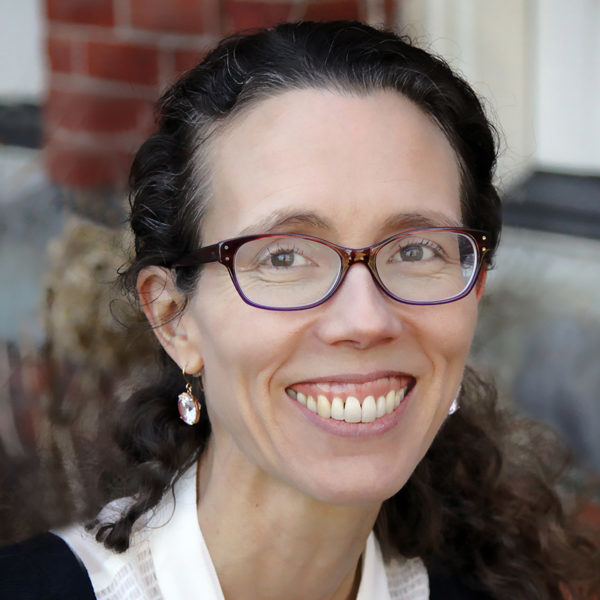The sky is blue today—that perfect, clear cerulean blue that only comes when the days are beginning to cool. A breeze stirs the leaves of the Japanese maple outside my window. Some of its leaves are beginning to turn red, and its helicopter seed pods shine coral in the sunlight. Across the street a stately cedar rises tall above all the other trees, the tips of its long drooping boughs stirring in the gentle wind.
These past weeks I have been reading Brian Doyle and Elizabeth Goudge. Stylistically, it’s hard to imagine two writers more different. Doyle’s terse, rhythmic prose leaps off the page and lands lightly in your mind, or your heart, while Goudge’s sentences flow like water bubbling over rocks until they settle in a deep, still pool that fills your senses and whets your imagination. Despite their stylistic differences, both writers get transcendence. Doyle sees it in the death of a mole or a game of basketball. Goudge sees it in the play of light on leaves or the layers of beechmast on the floor of a dark wood. Both understand that this temporal physical world is shot through with the eternal and the spiritual.
![]()
Until a few hundred years ago, an ordinary woman staring into the azure depths of the sky outside my window would have known she was staring into the heavens—and if she only had eyes strong enough would see into Heaven itself. The sun that I see would have been to her as the light of God that enlightens everyone. The breeze riffling the leaves would have seemed the breath of God that hovered over the waters of creation and even now breathed life again and again and again into the dark and empty brokenness of the world. And the leaves of the trees are for the healing of the nations.
We no longer think this way. Not naturally, not normally. We have to be trained to see the sky and the sea and the sun and the stars as something more than physical. Even for me, metaphorically minded though I am, such seeing is an intentional practice, something I have to work at. I must remind myself: God is here, God is holy, I am standing in His glory.
Writers like Doyle and Goudge, and countless others, help me to remember.
They teach me to see not only the surface and stuff of things but the very heart that pulses in and through them. They show me a world crammed with heaven.
They call me to pay attention to what is right in front of me, and to recognize it for what it truly is: itself, yes, but also more than itself; a glimpse of the glory and goodness of God. These writers’ voices sing to the soul, their vision shines and hauls my eyelids up in wonder to the trees and the sky and the sun, to a glimpse of God’s glory and goodness. And is that not the end for which we were created, to glorify God and enjoy Him forever?
Though the sun is shining in a cloudless sky, the days are growing shorter, cooler. Fall is coming, and then it will be winter, and my world will turn gray and damp and cold. The leaves will fall from the maple in a shower of crimson glory, and they will wither on the ground and turn brown and disintegrate into dust. From dust you are, to dust you shall return. And yet—the disintegrated dust of those leaves is the soil in which my snowdrops will emerge, lifting their fragile green necks from the earth, holding their hoary heads high.
![]()
Featured image is courtesy of Alisa Anton via Unsplash. We are grateful for her generosity.
K. C. Ireton is a multi-published author of both fiction and nonfiction books, including The Circle of Seasons: Meeting God in the Church Year and A Yellow Wood and Other Stories. She and her daughter, Jane, co-host Lantern Hill, a podcast for people who love books, children, and God. Visit kcireton.com to learn more about her work and download the first two chapters of her most recent book. Or visit her on Substack at kcireton.substack.com, where she publishes stories and liturgies.
Leave a Reply
A Field Guide to Cultivating ~ Essentials to Cultivating a Whole Life, Rooted in Christ, and Flourishing in Fellowship
Enjoy our gift to you as our Welcome to Cultivating! Discover the purpose of The Cultivating Project, and how you might find a "What, you too?" experience here with this fellowship of makers!


This is just a wonderful piece of writing … the words, the images, and the lovely thoughts about glory and telos (those leaves…). Thank you.
This is breathtaking, Kimberlee. Thank you! May we have such eyes to see! May we lean into the dust we are knowing bone to bone that His breath makes us live and embody wonder.
Leslie, Lancia, thank you for taking the time to read my piece, and to respond. Yes, may we all have eyes to see the beyond that is ever unfolding around us, in dust and glory.
Dear K.C.,
What a delight to read this, in part, because Goudge and Doyle have long been go-to voices that stir my heart and imagination. Today, in particular, having weathered a week’s worth of frost (and the resultant havoc in the yard), it’s deeply good to embrace a quiet nudge toward transcendence.
Beautiful, Kimberlee!
I think I see how immersion in the work of such writers leaves a mark. I have never met these two, and have been definitely enticed to introduce myself in short order!
Thx to you, my friend?
Denise
Laurie, oh, yes, that nudge toward transcendence! It is easy to ignore in the hurly-burly of daily life. It is good to have our eyelids hauled up (in Sylvia Plath’s memorable phrase) by the beauty of frost-coated leaves, to pause and breathe and remember that things are more and deeper than they may at first appear. May we all have the grace to see.